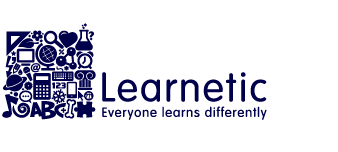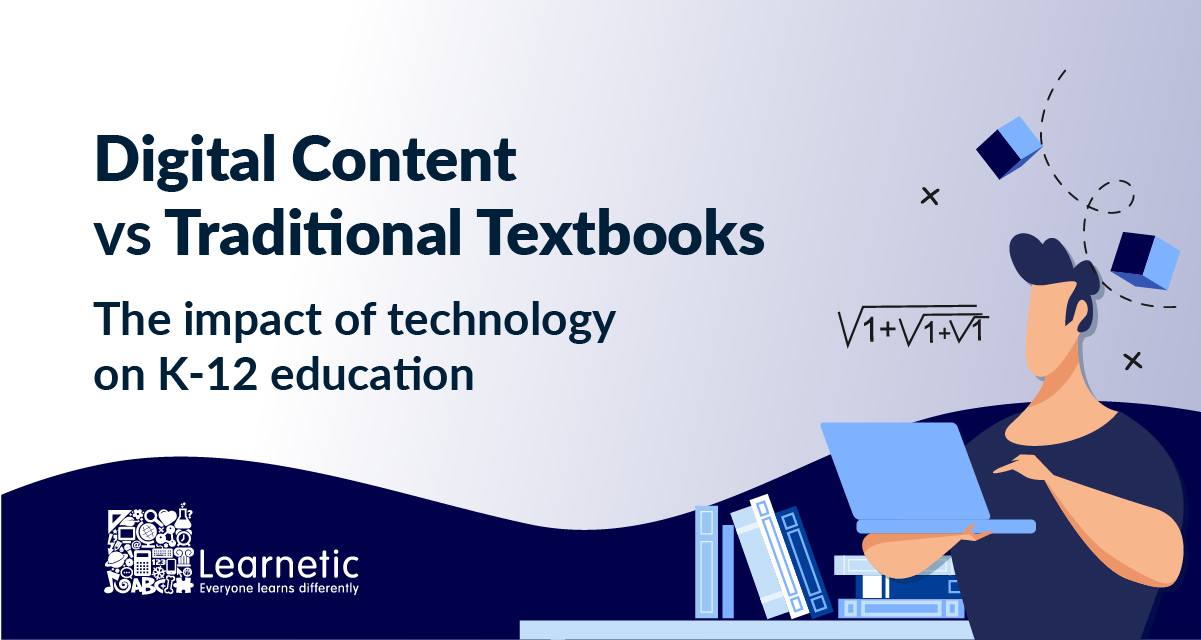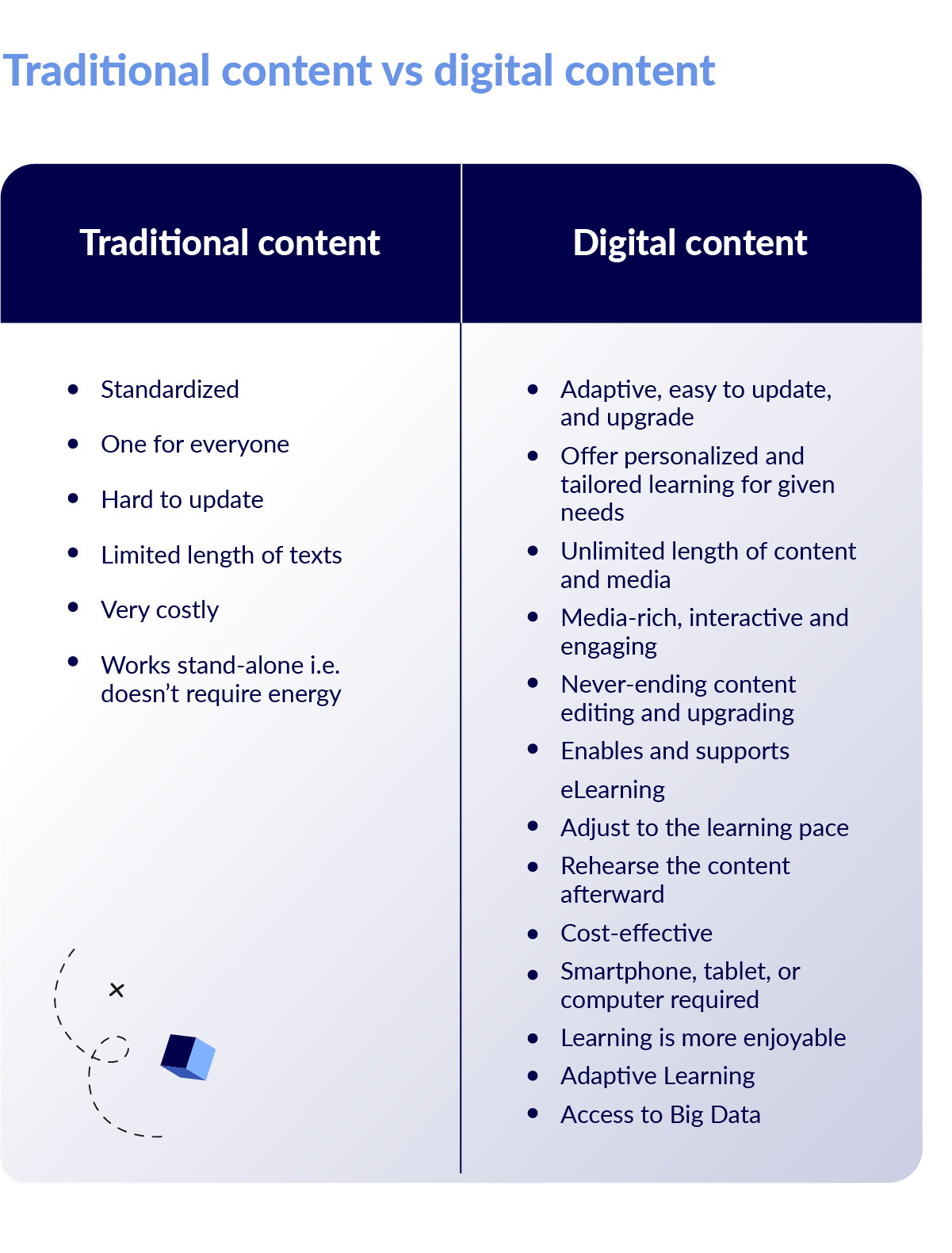Digital content and its educational value. A comparison of eContent and Traditional Books.
eLearning proves its value making education more engaging and tailored to individual learners. It is not only the amount of well-designed eContent that is increasing but also the expectations to move digital education forward. The strong entry of ChatGPT in early 2023 heralds an unprecedented pace of technological change that will affect every industry, education not excluded. Isn’t perfect timing for K-12 publishers to catch the wave?
The future is already here. It’s just not evenly distributed yet. A famous quote usually attributed to science-fiction writer William Gibson precisely reflects the current state of eLearning. There are places where students enjoy the full benefits of eContent at the moment and places where progress is gradual and is highly expected.
Generational change – digital natives want to speed up
One can imagine fertile areas of digital education and a desert swath of outdated textbooks. These two realities are close together because the same, young student is in both. We have in mind digital natives, those born after 1995 who belong to Generation Zet, and those born after 2010 who belong to Generation Alpha.
The way they consume media is a defining factor for the younger part of Gen Z, who grew up being permanently connected to the Internet. Gaming is a top entertainment activity for them, and they view it as a means for socializing and self-expression. This cohort favours digital news formats from social media feeds, YouTube, and search engines. More than half of Gen Z consumers say they consume information on their smartphones exclusively, according to a Digital media trends survey conducted by Deloitte.
If we assume Gen Z is highly connected and digitally savvy, what should we think of Gen Alpha when it grows up? Born entirely in the 21st century, Gen Alpha is the first truly digital native generation. – They began being born in 2010, the year the iPad was introduced, Instagram was created and “app” was the word of the year, so they have been raised as “screenagers” to a greater extent than the fixed screens of the past could facilitate. For this reason, we also call them Generation Glass – writes The New York Times.
Teachers appreciate available educational technology
If the digital world is as tangible as the physical for today’s students, do publishers, teachers, and policy-makers know how to respond to this structural change?
As we delve deeper into The State of Technology in Education 2021 report, we see a positive approach among teachers towards using digital content in the curriculum. Educators agree that using technology to enhance collaboration and communication is more important than ever. The vast majority of them agree technology should be incorporated into lessons and that tech improves their performance, as well as they agree that technology is necessary for everyday life, so it should be reflected in lessons.
The importance of technology in education, according to educators:
- 83% of educators say technology is necessary for everyday life, so it should be reflected in lessons.
- 79% agree and strongly agree that technology helps them do their job better
- 77% say technology is a highly effective way to engage students
- 77% of educators believe technology is a great way to engage students
- 76% of educators believe technology helps them do their job better
- 54% of educators constantly strive to innovate with EdTech using technology as a tool for education
- 48% of teachers recognise the power of technology to revolutionise teaching and learning
- 40% say that enhancing communication and collaboration is the number one technology priority
- 40% of educators believe technology improves students’ behaviour
Three of four believe technology is a great way to engage students, and technology helps them do their job better. When answering the question of whether technology allows them to do the job better, as many as eight of ten agree and strongly agree. Most educators recognise the power of technology to revolutionize teaching and learning and are excited to explore its full potential. Nevertheless, it is surprising to note that as much as two-thirds of educators still use photocopiers more than any other technology.
How to bridge the gap between expectations and reality?
This is supportive if as many as two third educators believe online content and digital resources will enhance teaching more than any other technology. Traditional content is set in stone: standardized, one for everyone, hard to update, has limited capacity and is very costly. On the flip side stretches digital reality without limits, as flexible as the human imagination. Rich and interactive media make learning more engaging and enjoyable. eContent offers personalized and tailored learning for given needs and adjusts to the learning pace. Using a smartphone, tablet, or computer gives a user access to big data, allowing rehearsing exercising. Last but not least, adaptive, easy to update, and upgraded eContent is cost-effective.
Why not imagine designing educational and interactive content in a Lego way? Having access to thousands of films, animations, pictures, and simulations, you can easily play with them, re-arrange and adapt them to given curricula or requirements. Let’s imagine chemistry lessons that can include theoretical knowledge and present recordings of exciting experiments that would usually be difficult to execute in a classroom. Increasing students’ experience with AR solutions irreversibly changes their ability to understand the topic and increases engagement. Learnetic offers ready-made eContent Packages dedicated to K-12 level covering maths, physics, chemistry, biology, and geography classes.
Ready-made interactive eContent for K-12
| Name of the product | Specification | Covered subjects | Grades |
| mCurriculum | Comprehensive Digital Curriculum for K-12 | Maths, Science, Physics, Biology, Chemistry | 4-12 |
| Primary Math! | Interactive Math Curriculum | Maths | 1-6 |
| mTalent | Interactive Resources for Special Development & Educational Needs | Visual Perception, Difficulties in Handwriting; Auditory Perception; Autism: Understanding and Imitating Speech | K-4 |
| Interactive Class Suite | Suite of innovative whiteboard resources with interactive student’s lessons | Maths, Physics, Chemistry, Biology, Personal and Social Education. | Primary School |
| Interactive Charts Of Natural Science | Interactive charts, simulations, and other educational content | Geography, Physics, Biology, Chemistry | 5-8 |
| Virtual Science Laboratories | Teaching aid full of interactive maps, diagrams, charts, animations, and simulations | Biology, Chemistry, Physics and Geography | Secondary School |
| English now! | Interactive English Course for Teenagers and Adults | English | Level of proficiency: A1-B2 |
Adaptive learning as a proven paradigm in digital education
When talking about eContent in terms of resources, it is essential to mention adaptive learning as a founding idea of digital education. Because everybody acquires knowledge differently, adaptive learning opens up endless possibilities to modify the presentation of material in response to a student’s performance. Learn more about adaptive learning.
| eContent Packages materials contain thousands of excellent quality multimedia and interactive materials covering hundreds of topics. They are constantly updated and easy to adjust to local curricula, language, and needs of the learners, teachers, and publishers. These solutions have been successfully implemented in over 30 international markets. |
Big Data in digital education
eContent opens up another dimension of learning, enabling data collection about the student’s development. Learning Management System (LMS) delivered by Learnetic can generate a vast amount of information concerning a learner’s behavior and the results obtained while solving interactive activities. Big Data opens up completely new opportunities not available for traditional paper-based education. Access to data takes designing digital content to a whole new level. Collected data is used to give instant feedback to the learner, and supports students in activating and strengthening the individualization of the learning process. Learn more about Big Data.
Above all, digital content is about digital literacy, an ability that emerges when we skillfully integrate eContent into the curriculum. eContent Packages teach asking questions, formulating hypotheses, conducting experiments, collecting and analyzing data, and drawing conclusions. Isn’t it great that the scientific method, in a nutshell, may be available from the pupils’ smartphones? Especially at a time when creativity and critical thinking will be key desired skills in a world where AI will be at one’s fingertips. Let’s prepare them together to be future-proof.






